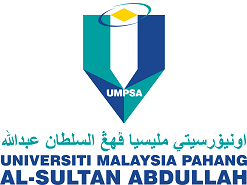Adsorption of Pb(II) from Aqueous Solution Using Dendritic Fibrous Type SBA-15 (DFSBA-15)
DOI:
https://doi.org/10.15282/jceib.v8i2.8716Keywords:
Adsorption, Dendritic fibrous type DFSBA-15, DFSBA-15, Pb(II)Abstract
The presence of heavy metals in the environment is undeniably harmful and toxic to living things, where the presence of Pb(II) inside human foods and drinks results in various diseases. The use of adsorption as a method of wastewater treatment is widespread, and effective adsorption performance depends on appropriate adsorbent selection. In this research, dendritic fibrous type SBA-15 (DFSBA-15) was prepared and used for lead (Pb(II)) adsorption. The physicochemical properties of the DFSBA-15 were characterized using TEM, BET, and FTIR. The characterization analyses confirmed the formation of fibrous morphology, moderate surface area, and bulk -OH. Several factors, including contact time (min), adsorbent dosage (g/L), pH, and initial concentration (mg/L), were examined for Pb(II) adsorption. The best adsorption performance (89.88%) was attained at 180 min, 1 g/L of adsorbent dosage, pH 5, and 100 mg/L of Pb(II) initial concentration. Pseudo-second-order reaction type and Langmuir isotherm provided good fits to the experimental data, with R2 ≥ 0.9943 and R2 = 0.9982, respectively. In short, the DFSBA-15 exhibits great potential for excellent Pb(II) removal.
Downloads
Published
Issue
Section
License
Copyright (c) 2022 Universiti Malaysia Pahang Publishing

This work is licensed under a Creative Commons Attribution 4.0 International License.



